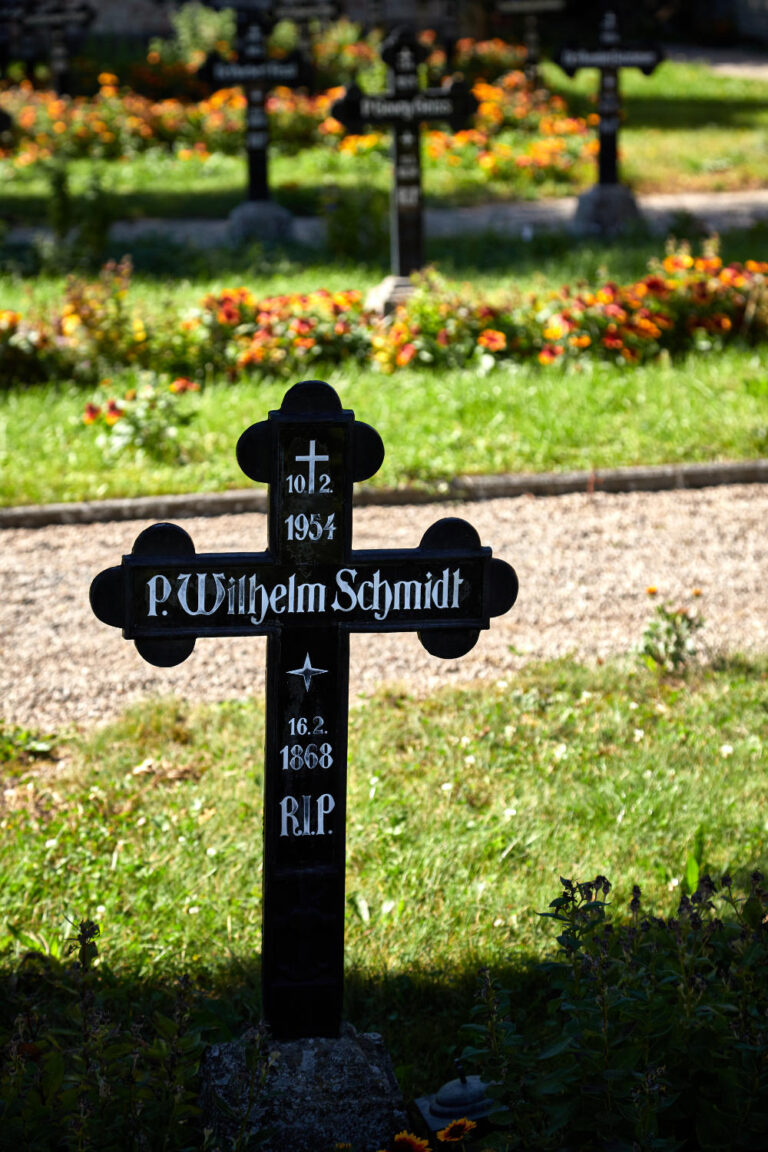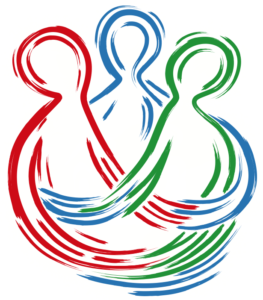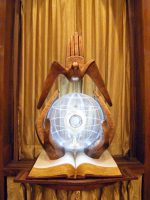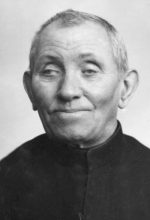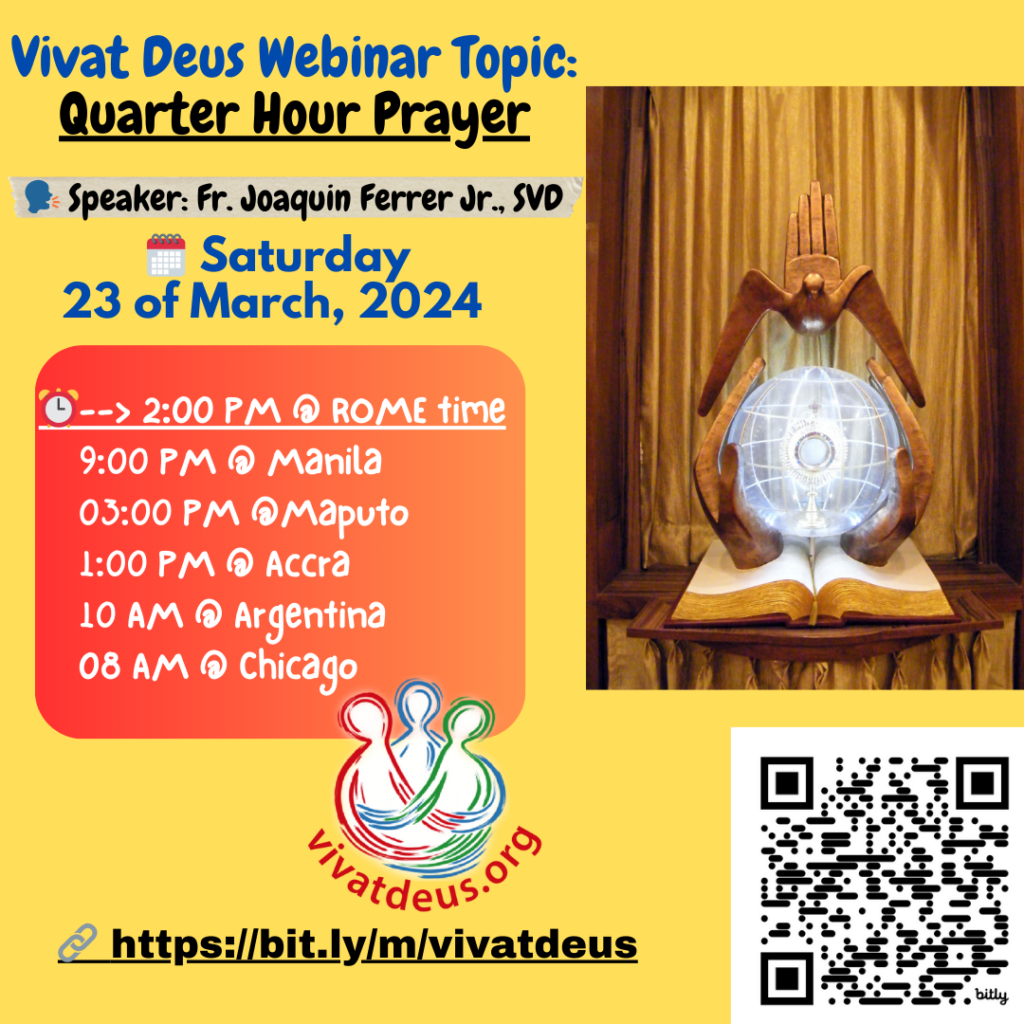In the month traditionally dedicated to the deceased (November 1937), Fr. Superior General Josef Grendel issued the second Exertitium Annum for the year 1938. He summoned his confreres to The loyal remembrance of our deceased confreres and zealous prayer for them (Nuntius SVD, vol. III: 1939-1943, pp. 83-86). He also highlighted the importance of cultivating the bonds between the living and dead confreres, united in one community started by Fr. Arnold Janssen.
Fr. Grendel’s concern must have brought positive effects since I could experience such bonds during my formation years in our Mission Seminary in Pieniê¿no, Poland. The care for our deep family ties, bonding the living and deceased confreres, was present in the regular prayer for the deceased confreres. In 1958 a mausoleum was built to commemorate the Polish deceased SVD Missionaries with their names and dates of death inscribed on stone plaques. Some of the confreres used to pray the Way of Cross in our cemetery while visiting the graves . Others cultivated the practice of daily prayer, after the evening meal, for good death. This practice of memento mori echoed our early constitutions from 1891 which encouraged confreres to think of their own bed as a coffin and the darkness of the night as the darkness of their death. The memento mori was prescribed in the Society’s practices through monthly special services for our deceased confreres in our communities.
While our predecessors had already finished their pilgrimage in the service of the Divine Word, we were about to start the same mission. Actually, as successors, we were to participate in the fruits of their work, listening to their experiences and legacy, which were handed over: “The Heritage of the Past is the seed that brings forth the harvest of the past”. We all had a share in the same project of God following in the footsteps of our Founder.
In his concern for the remembrance of our deceased confreres, Fr. General reminded everyone : Ne unquam fratrum defunctorum memoria omittatur… (Never omit the remembrance of the departed brothers). He invited all confreres to fulfill the recommendation of Constitution no. 326, to remember all our departed confreres so that their presence in the Society would never fade and the silent prayer for them in our souls would never fall silent.
The custom of reading the names of our dead confreres at the table on the eve of their death anniversary is a reminder and an inspiration of their living memory. “The practice, whether it would be fruitful, depended on the confreres. The reading of the names must enliven both the soul of the confreres individually and the community, as a whole. In this respect, we should be simply mindful of the respect accorded to us while our name would have been read”. This thought could teach us a lot. It has been the practice that the names of the deceased confreres were also included in prayer before the Blessed Sacrament, during the Mass of the next day or offered in the Holy Communion. Doing so, we follow the example of our founder and one of the oldest customs of the Society. In reality or in spirit we can always silently visit the graves of our confreres. We want to bestow continually on our deceased confreres the blessing of our community. In return the blessing of our deceased confreres will be granted to us now and in eternity. We ourselves already experience a benefit of such remembrance in our souls. It is for us a powerful memento. At the same time, we can take something from the deceased in our souls, namely their peace and tranquility, their safety and security, all from God. In the spirit of recollection, may the local superiors and the Officials, at the beginning of January 1938, bring closer to the brothers, seminarians and novices the thoughts based on the Exercitum Annum and remember them during the year when the opportunity arises.
The General’s reflection for 1938 wouldn’t be complete without recalling the well-established customs of remembering our departed confreres as practiced from the very beginning of our Society, especially at the Lord’s altar. When a confrere died the house bells were rung immediately. The confreres went to the Church and heard the official announcement of a confrere’s death followed by prayers for the eternal rest of his soul. Since 1875, the Mission House in Steyl gave great importance to prayer for the deceased members of the Society, including indulgences for their eternal rest. Until 1885, each priest of the Society was to celebrate a Holy Mass for a confrere upon receiving news of his passing. The increasing number of members forced the Society to change the custom, whereas the SVD family continued to cultivate our prayerful ties with the deceased in other forms. Shortly after 1900 our Founder suggested that all provinces are to notify the Generalate by telegram of a confrere’s death to the Generalate and then arrangements are to be made for the celebration of 15 Masses for his soul in Steyl, while another 15 Masses were to be said in the concerned province. The constitutions from 1891 already resolved that 30 Masses for the deceased confrere would be offered and this practice remained in force until 1944.
In the Jubilee Book of 1900 a complete list of our deceased confreres appeared for the first time covering a period of 25 years. It contained the names of 48 departed confreres. Also the first issue of the Catalogus, which appeared in 1912, published names of all 153 deceased confreres. By the Jubilee Year 2000, the number of deceased confreres reached 4902: 50 bishops, 2619 priests, 1779 Brothers, 252 scholastics and 202 novices. The Society is approaching an equal number of the living and deceased members. This may occur any time. In 1917 a practice was initiated that later became an SVD tradition, namely the listing of the names of those members who had died on the particular day in the Ordo Divini Officii. Their names are read aloud at the evening meals or during the community Mass. The present day Ordo includes only the names of the confreres who have died during the past 30 years.
There is also the edifying tradition to care for our cemeteries all over the world. To begin with, Fr. Arnold Janssen, who visited the dead confreres, saw the necessity to have our own cemetery in Steyl since 1897. Already on 26 March 1889, the first SVD, Bro. Antonius (Josephus Thissen, 1861-1889) was buried in the new cemetery in Steyl and another 15 confreres found their rest there. Soon, other cemeteries were established at our mission Houses in Neisse/Nysa, with the oldest grave from 1896, in St. Gabriel (1903), and in St. Wendel (1920). The first bishop of the Society, John Baptist Anzer, found his final resting place in the shadows of St. Peter’s Basilica in Campo Santo (1903).
The cemeteries of the Society preserved a certain characteristic feature and an identical appearance all over the world, even if initially the priests and Brothers were buried separately. Everywhere the graves are identical and without headstones – marked only by crosses with appropriate information on the deceased (date of ordination or final vows). In this way, the Society emphasized the equality of all members of the Society and its internationality. With the distinctive Way of Cross in our cemeteries, the confreres could find a suitable spiritual climate for prayer and meditation.
